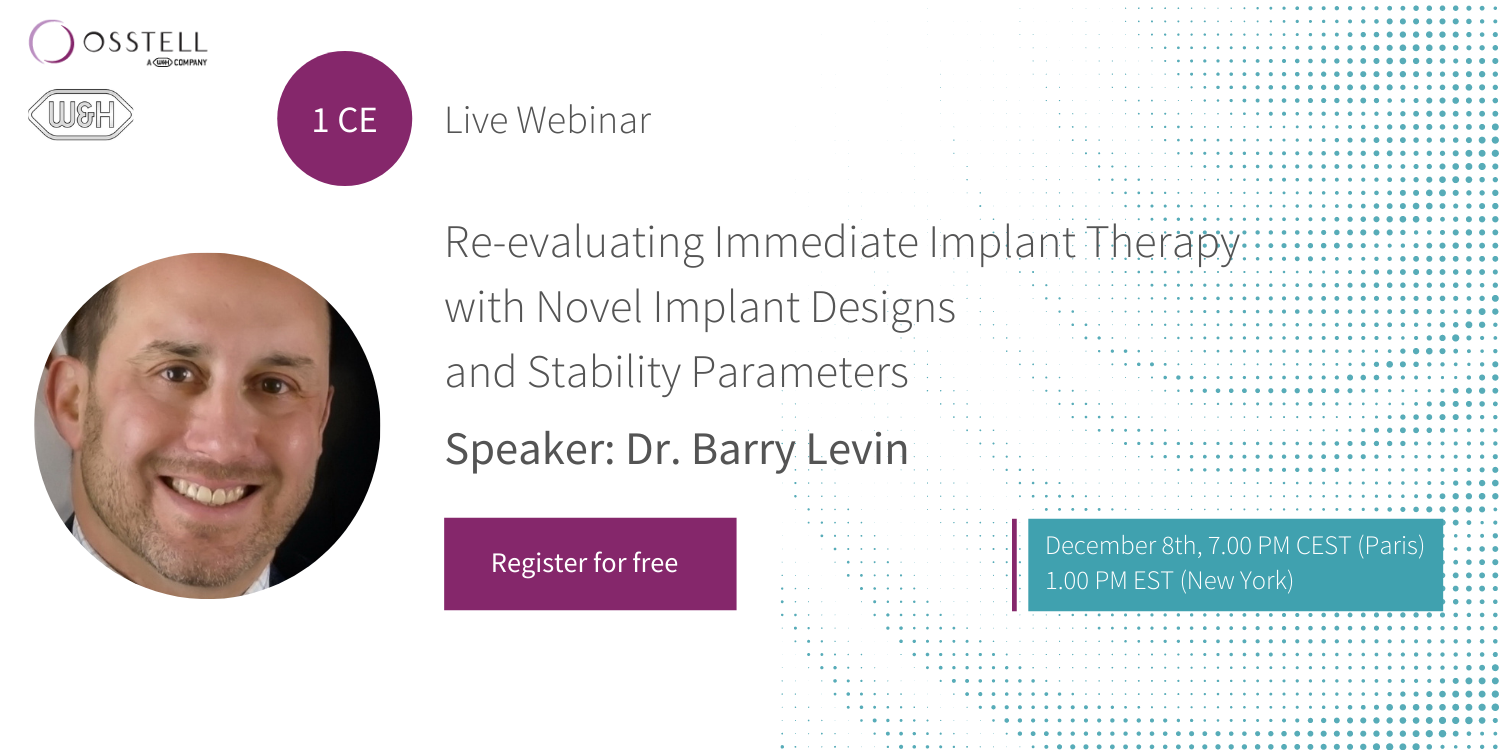
Free CE webinar with Dr. Barry Levin
Nov 25, 2021
Re-evaluating Immediate Implant Therapy with Novel Implant Designs and Stability Parameters
Re-evaluating Immediate Implant Therapy with Novel Implant Designs and Stability Parameters
By Dr. Barry Levin
1 hour | English | 1 CE credit | FREE
December 8th, 7.00 PM CEST (Paris) / 1.00 PM EST (New York)
Register for free
Webinar details
Immediate Tooth-Replacement Therapy (ITRT) has become a common and predictable treatment for hopeless anterior teeth. Patient selection is critical though. Careful medical and dental evaluation precedes treatment. Selecting sites where available bone palatal and apical to extractions is required for implant placement. Provisional restorations should remain out of occlusal contact with teeth in the opposing arch. And primary implant stability is critical for ITRT to be successful.
A new, inverted body-shift implant (INV) has been designed to meet biologic criteria for healing and achieving high levels of mechanical stability in immediate extraction sites.
The two primary criteria for evaluating implant stability are insertion torque value (ITV0 and implant stability quotient (ISQ). Each method measures different parameters of primary stability. ITV is a valuable measure of rotational stability, but can only be evaluated at time of placement. ISQ measures implant axial stability and can be repeatedly evaluated along the course of treatment. The objective of this webinar is to demonstrate how the two measures of stability can be implemented when performing ITRT and a clinical study evaluating whether a correlation exists between the two exists at time of implant placement (T1) and at follow-up time points (T2).
Learning objectives:
- When to consider immediate, non-functional, provisionalization
- When it is recommended to proceed to final restoration(s).
- Appreciate the importance of obtaining a baseline ISQ value and how to interpret sequential ISQ values.
- When comparing implant macro-design between traditional implants and a new, inverse body shape (IBS), correlations between ITV and ISQ may exist and the limitations of ITV when deciding when to complete restorative therapy.
About Dr. Barry Levin
Barry P. Levin, D.M.D. is a Diplomate of The American Board of Periodontology. A graduate of Temple University School of Dental Medicine, he earned his certificate in Periodontics from the University of Maryland. Dr. Levin has been on staff at the University of Pennsylvania-Periodontal and Dental Implant Surgery Department since 1996. Dr. Levin publishes and lectures both nationally and internationally on topics pertaining to dental implantology and periodontics and has been involved in research pertaining to new and advanced dental implant designs and bone regenerative materials.



